Does archaeology confirm what the Bible says?
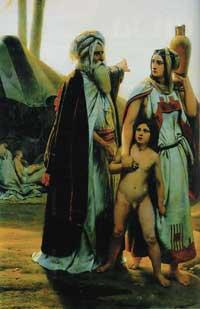
The fundamental basis of monotheistic religions is also one of the sources of the Bible and Western civilization. At present, however, the studies conducted by experts from different fields of science have been carried out by the Bible and in view of the results obtained in archaeology, paleography, geology and genetics, it can be said that the Old Testament contains historical elements, although these vary in oral transmission and writing. The Bible can therefore guide archaeologists, as it was in its day for the German Iliad Heinrich Schliemann to find the Trion or the Acropolis of Mycenae.
The first book of the Bible is Genesis. The first eleven chapters include the origin of the world and the human being, the Flood and the avatars of the Tower of Babel, but they are all considered mythical. It is believed to be based on legends from Mesopotamia, Babylon and Canaan.
But about people, if there are doubts. In Abraham, Isaak, Jakob, and Joseph appearing before Moses, did J. C. Between 2000-1500? Did Joseph become Pharaoh's prime minister after the sale of his brothers and the arrival of the slave to Egypt?
According to Genesis, it was from the Sumerian city of the Abrahan Eufrate to Canadian lands (up to the Jordan River and the Mediterranean Sea). Abrahan was Hebrew, but there are discussions about the origin of this word. Some say it comes from the successor Eber, son of Noah. In the opinion of others, however, it comes from the word Hapiru or Habiru, that is, from the word of the “wanderers”, a. C. XIII. and XII. It is found in Egyptian inscriptions for centuries.
BC. IV. In the Californian city founded in the millennium they had a developed civilization and according to Genesis, a. C. XVIII. In the 20th century Abraha and his relatives left the city and traveled more than 2,000 kilometers to Palestine. In history there are references of the nomads of that time, which were sometimes taken with distrust. BC. II. a text from the Sumerians at the beginning of the millennium says: “They travel through Estepa, do not cultivate and have no home. They have no city, they eat raw meat, they are uneducated and ungovernable and they do not bury the dead as usual.”
Arabic and Jewish Kinship
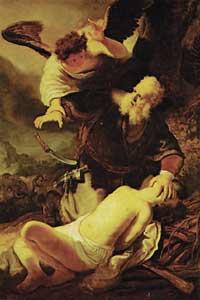
BC. II. from the millennium lived Semites (descendants of Semen) in the territories of Kanaan. By the effect of the hungry, Abraham traveled to Egypt, where, after getting rich there, he returned to Canaana to take the Makpela cave of Hebron, where the family tomb was installed. That is the tomb of Patriarch, which has never been found.
The woman Sarah of Abrahan, who for many years had no children, led her to meet with the maid Hagar. His son Ismael was born from Grip, but when Abrahan was 100 years old and Sarah was 90, Isaak was born his son. According to tradition, Jesse is the ancestor of the twelve Jewish tribes and the ancestor of the twelve Arab tribes of the Ismael desert.
The Arabs and the Jews would therefore be cousins, the Semites. It must be clarified that what the Bible says has been confirmed in some way through genetic studies. Professor Gerard Lucotte of the International Institute of Anthropology of Paris five years ago studied in hundreds of Europeans, Jews and Arabs of the Near East, the markers inscribed in the DNA of the Y chromosome. Mr. Lucotte found that markers 7 and 8 were ten times more numerous in Jews than in non-Jewish Europeans, but in Arabs they are as abundant as in Jews. It is true that this genetic research does not fully affirm the biblical event, but at least has no discrepancy.
Price of slaves
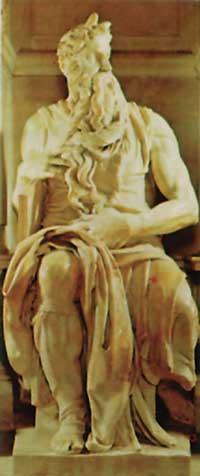
According to tradition, the twelve Israeli tribes were driven by hunger to migrate to Egypt. There they lived two or three centuries of happiness and then were enslaved. For the desert nomads, who gave them pharaohs that were not pleasant: preparation of clay, elaboration of wrecks in molds, etc.
The Egyptologist at the University of Liverpool, Kenneth Kitchen, analyzes the migrations that the patriarchs were going to carry out. He has compared the prices of slaves quoted in the Bible at different times with those of other documents in those territories. Joseph, for example, was shot down by his brothers aboard a ship; he was picked up by a nomadic people from northern Arabia and sold to the Ismaeldarras in 20 silver siklots. These were the ones who then took Egypt.
The silica had about twelve grams of silver, widely used in the Middle East. (Currently the Israeli shekel currency is called the shekel.) But the syllables are mentioned in other documents other than the Bible; a. C. XVIII. and XIX. for example in documents of centuries. Hamurabi was king of Babylon. Between 1792 and 1750 and in its famous Code it is mentioned that the slave was worth 20 shekels. In the royal archives of the state of the Mesopotamian city of Mari the same price is mentioned.
Later, when Moses gave laws to his people to live in the Promised Land, one of them said that when the bull branched the slave or the servant, the owner had to pay 30 shekels and that the bull had to die of stone. In the documents found in the Mesopotamian city of Nuzi and Ugarit in Syria, it is also observed that the price of slaves was raised to 30 siclots. In the Persian Empire, C. In the 5th century, because of inflation, the price of slaves was raised to a 90-120 syllable.
In the words of Kenneth Kitchen, for many archaeologists and epigraphs the first version of the Bible a. C. VI. They are from the 20th century, but if that's true, why didn't writers put for slaves the price of 100 cycles of that period? The prices quoted in the Bible coincide with the real for a thousand years.
The scientist Kitchen has compared the laws of these territories with those that appear in the Bible. As for succession, in the patriarchal epoch, neither in the Bible, nor in the Code of Hamurabi, nor in the Lipit-Ishtar Code of the Sumerians, it is not explained that the older child must inherit more of the inheritance than the rest. In times of exodus (B.C. XIII. In the nineteenth century, the law dedicates to the oldest twice as much as to the others and at the same time the laws of Mari and Nuzi do the same.
Monotheistic religions
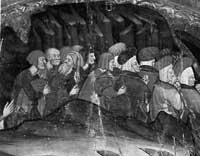
We do not know if it was a coincidence, but a century before the Exodus the Egyptian pharaoh Akhenaten established a monotheistic religion. They abandoned the worship of the god Amen and accepted the god Aton. The Sun was his symbol. Moses may have known that religious revolution as a young man.
But was it Moses? Apart from the Bible in Moses, the slavery of the Hebrews in Egypt and the Exodus anywhere else. If most archaeologists have Exodus at the time of Pharaoh Ramses II (BC) They say it was 1279-1213). But nothing that is mentioned in the Old Testament is in the Egyptian documents; neither the bloody river, nor the set of swords and mosquitoes that sheltered all the people, nor the dead elder sons nor the army of Pharaoh destroyed under the sea water. Cent R. The British archaeologist Weeks is currently excavating in the Valley of the Kings the underground tomb of the forty sons of Ramses II and does not believe he discovers anything the Bible says.
In the Sinai desert there is not even a trace in the forty years that Moses spent with his people, although recently between 1962 and 1982 the Israelis occupied the peninsula carrying out numerous archaeological investigations. d. C. IV. Since the nineteenth century Christian tradition claims that Mount Sinai is the southern peninsular Muse (2,245 m), but there are some exegetes that place it in Arabia, where there were volcanoes then.
Concert Box Search
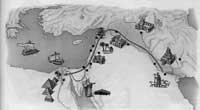
In the time of Moses the Concert was kept in a box and the characteristics of this golden archery box are given in detail in the Bible. Two elbows and a half long, elbows and half wide and a half high, that is, measures of 120 x 70 x 70 cm, but the truth is that Concert Box has never been found.
After Moses' death, the Hebraians arrived in the Promised Land under Joshua's direction. That conquest. It would occur between 1220-1200. When the Israelis entered Jericho, all its inhabitants and animals were killed, according to the Bible. However, the latest discoveries show that the conquest of the Canadian land was done in peace and gradually. British archaeologist Kathleen Kenyon has been digging in Jeri for six years and has found no trace of violence. According to the Israeli responsible for the Dead Sea manuscripts, Magen Broshi, other cities in Jeri and Palestine, such as those in Judea and Samaria, were almost empty. XV. from the 20th century. However, apart from the Bible, other sources do not mention Israel and Joshua of that time.
Kingdom of Dabidas
The Bible and history, however, coincide on other issues, such as the subject of the Filistes. The Philistines were a marine village, probably from Mycenae or Crete. BC. In 1180 attempts were made to invade Egypt, but Pharaoh Ramses III paralyzed. They landed on the Palestinian coast and at least conquered part of Judea. According to the Bible, the Israelis were subjected to forty years of affiliation.
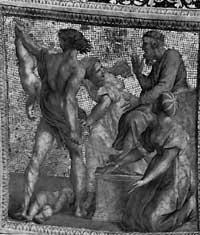
Dabid, who beat Goliath, was certainly a historical character. BC. By 1000 Pastor Dabid killed Goliath with his grandmother. Then he was king of the Judah and then king of Israel. He conquered Jerusalem and conquered Philistines, Moabeses, Jebusites, Damascus Arameans and Edomes. He gathered together the twelve tribes of Israel, being Jerusalem the capital.
In 1868 they discovered a trail of the Moabs east of the Dead Sea in Dibon. It has been written of Moabera and says that King Mesha, also referred to in the Bible, defeated the Israelis. In this wake appears the slogan “Dabiden etxea” and to the north of Lake Tiberiades is the inscription “Dabiden etxea”, also written in arama in Tel Dan.
Dabid, therefore, was a historical character. From Bethshe had his son Solomon. This was the king of Israel. Since the year 970 he did great work in his mandate. He built the temple of Jerusalem, organized maritime expeditions, controlled commercial routes, etc. According to Ethiopian tradition, with the queen of Sheba, queen of the Sabatarras in northern Arabia, Meneli had a son who began the dynasty of the kings of Ethiopia.
After Solomon's death the empire was divided. The northern tribes formed the kingdom of Israel and the descendants of Solomon maintained the kingdom of Judah in the south. Taking advantage of this weakness, the troops of the Egyptian pharaoh to. C. In 920 they invaded Palestine.
Over another three centuries there were wars and conflicts, but a. C. In 587 King Nebuchadnezzar II of Babylon conquered Jerusalem and destroyed the city with its temples.
Buletina
Bidali zure helbide elektronikoa eta jaso asteroko buletina zure sarrera-ontzian











